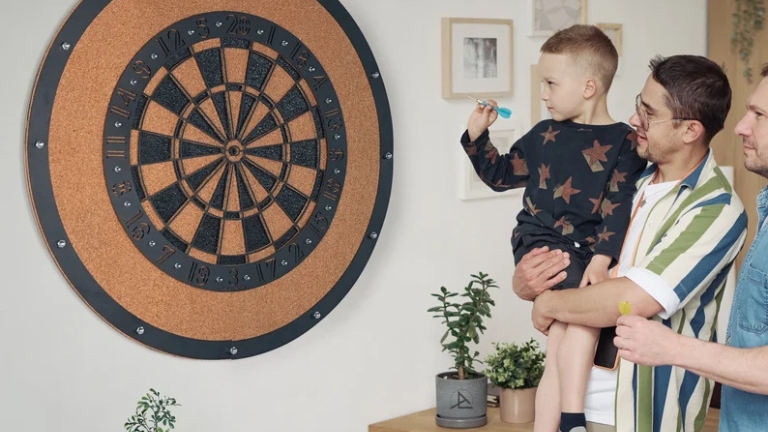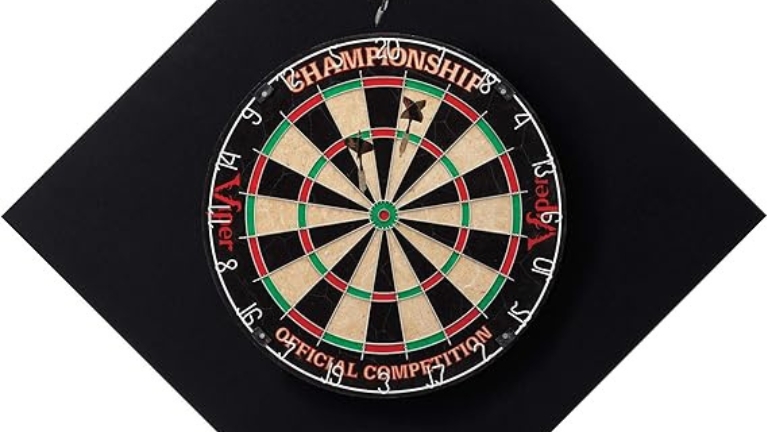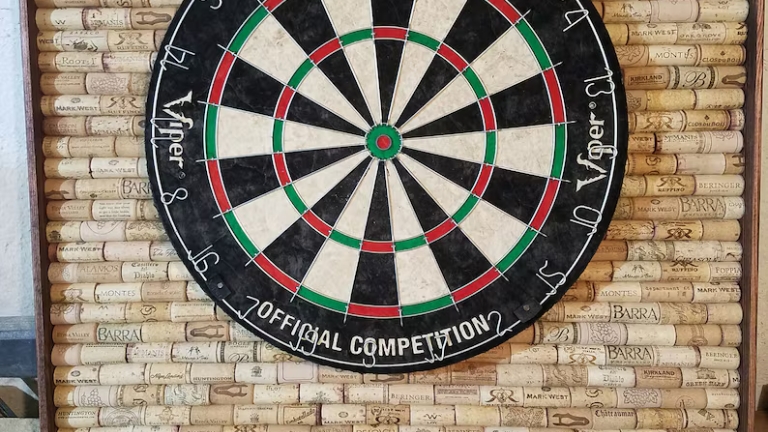The dartboard is the central part of the game, but the backboard behind it is also very important. It helps keep your walls safe from darts when you fail to hit the board and makes the area look nicer. Understanding the right size for your dart backboard is important for how well it works and how it looks.
In this article, we’ll look at dart backboard dimensions, thinking about things like the size of the room and answers to some questions.
Understanding the Purpose of a Dart Backboard
When you start looking at different sizes, it’s important to know why a dart backboard is useful. The main job of a backboard is to keep your walls safe from darts that go off target. Even good players sometimes miss the dartboard, and without a backboard, your walls might get damaged with holes.
A backboard also makes the dartboard area look nicer. It surrounds the dartboard, making the space look more neat and professional. Depending on what it’s made of and how it looks, a backboard can also fit in well with the room’s style.
Standard Dartboard Dimensions
To choose the right size for a dartboard backboard, you need to know the usual measurements of a dartboard. A typical dartboard is 18 inches (45.72 cm) across. It should be placed with the bullseye’s center 5 feet 8 inches (173 cm) above the floor.
Understanding these measurements is important because the backboard must be big enough to protect the area around the dartboard where darts are likely to miss.
Ideal Dart Backboard Dimensions for Different Spaces
When picking a backboard for your dartboard, consider the size of your room, how skilled you are at playing darts, and where you’ll put the dartboard. Here’s a simple explanation to help you choose the right size:
Small Spaces (Narrow or Tight Areas)
In small spaces like a narrow hallway or a small game room, the backboard should be big enough to shield the wall near the dartboard.
It’s best to have a backboard that goes out at least 6 inches (15 cm) past the dartboard on each side. This means the backboard should be around 30 inches by 30 inches (76 cm by 76 cm).
This size gives you a good amount of room for mistakes without taking up too much space. If your room is really small, think about using a round or oval backboard, which can save space while still keeping the wall safe.

Medium Spaces (Standard Game Rooms or Basements)
In a medium-sized space like a game room or basement, you can be more flexible with the size of the backboard. In this case, you might want to focus on both protecting the wall and making the area look nice.
A backboard that goes 12 inches (30 cm) past the dartboard on each side is a good option. This would make the backboard about 42 inches by 42 inches (107 cm by 107 cm).
This size not only keeps the wall safe but also gives a bigger frame around the dartboard, making it stand out more in the room.
Large Spaces (Dedicated Game Rooms)
If you have a large space just for playing games, you can choose a large backboard for your dartboard. In such rooms, the backboard is not only useful but also makes a strong impression.
A backboard that is 18 to 24 inches (46 to 61 cm) wider than the dartboard on each side would be perfect. This would make the backboard about 54 inches by 54 inches (137 cm by 137 cm) to 66 inches by 66 inches (168 cm by 168 cm) in size.
This size offers the best protection for your wall and looks very impressive. It’s also great if you have more than one dartboard or if you want to add other features, like chalkboards for keeping score or pretty lights.
What is the Best Material for a Dart Board Backboard?
The ideal choice for a dartboard backboard is cork because it readily takes in the force of the darts, keeping the wall safe and quiet. Cork is durable, can fix itself, and gives a flat surface that makes it simple to take out darts.
Dense foam is another great choice since it also absorbs the force well and is light, making it easy to set up. Both cork and dense foam keep the wall safe, make your darts last longer, and give your dartboard area a polished look.

What is the Ideal Thickness for a Dart Backboard?
The ideal thickness for a dartboard backboard is around 1 inch. This thickness gives enough padding to catch darts that don’t hit the board, keeping the wall safe from harm. A 1-inch thick backboard, made from cork, foam, or wood, can handle hits well without being too big.
This thickness also makes the backboard strong and protects the wall for a long time, so darts don’t go through it. Some players might want a slightly thicker backboard, up to 1.5 inches, for extra safety.
What are the Advantages of Having a Dartboard Surround?
A dartboard surround has many advantages. It helps protect the wall by covering the space around the board where darts sometimes miss and hit the wall. It also makes the game quieter by absorbing the sound when darts hit it.

